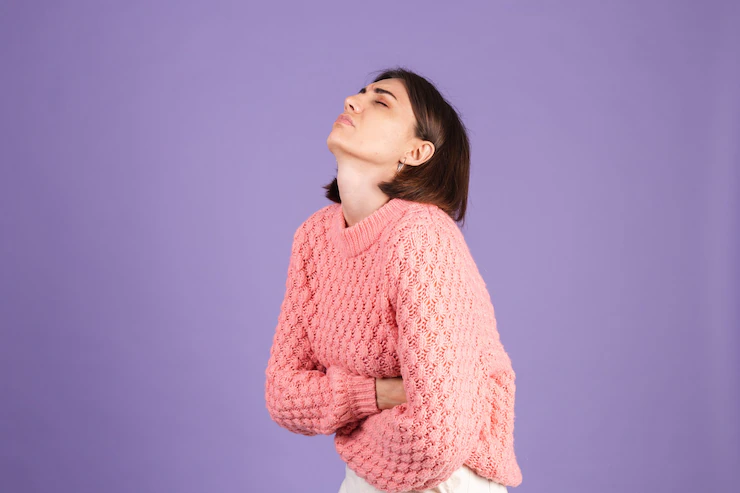How to test if a woman is infertile?


Economic insecurity, concerns over the impact of climate and environmental change on children, worries over career growth, and fertility issues are some of the causes that need to be addressed regarding infertility.
Infertility is usually diagnosed when a woman cannot conceive after 12 consecutive months of unprotected sex. If you are above 35 years of age, you may consider consulting a fertility specialist if you haven't conceived after 6 months of unprotected sex. Female infertility is responsible for one-third of the cases of infertility. Infertility problems in the health of both the male and female partners are also responsible for one-third of the couples who struggle with infertility.
WHO defines infertility as a disease of the male and/or female reproductive organs in which there is a failure to become pregnant after regular unprotected intercourse for 12 months or more. It stresses the increasing importance of fertility care as millions of couples struggle with fertility globally.
Although there is a wide range of environmental and social causes attributed to infertility, there are quite a few biological causes of infertility. Biological causes of infertility may be concerned with either or both the male and female reproductive health.
In some cases, a couple may suffer from unexplained fertility in which the exact cause of infertility may be hard to pinpoint. In general, the cause of infertility is not easy to diagnose as there may be a combination of factors responsible for stalling up that pregnancy, or you may not be able to detect any specific problems responsible for preventing pregnancy as in the case of unexplained infertility.

Some of the causes of infertility among females include the following:
Follicle-stimulating hormone and luteinizing hormone are two hormones responsible for the release of eggs from the ovary during the mid-cycle period each month. An imbalance in the hormones affects the process of ovulation. Hypothalamic dysfunction caused by underlying health problems like obesity, anorexia, chronic stress, and an unhealthy lifestyle may manifest in hormonal imbalance.
High levels of prolactin in your body are another cause of infertility, as it results in lower estrogen in the body, decreasing your chances of infertility. Hypothyroidism, a common endocrinal disorder among women, is also responsible for infertility.

Almost 8% of women suffer from PCOS during their reproductive years. A common cause of infertility, PCOS is common among women suffering from obesity, insulin resistance, chronic stress, and inflammation.
Abnormal tumours and adhesions caused by STIs affect a women's fertility. Fibroids and polyps are often common and may not always affect fertility. Depending on the size and number of these benign tumours, they may affect a woman's fertility differently. An abnormality in the shape of your uterus and cervix can also affect your chances of conceiving. The health of your cervical mucus is vital to facilitate the passage of sperm across the cervix and into the uterus. Any problems related to cervical mucus can considerably reduce your chances of conceiving.
Blocked, distended, or damaged tubes are a major cause of infertility among women. Pelvic inflammatory disease due to STIs can affect a healthy fallopian tube. Tubal and pelvic adhesions are often a manifestation of chlamydial or gonorrheal infection. Pelvic surgeries also cause tubal adhesions and blockage that your fertility.
Endometriosis occurs when the tissue of the inner lining of the uterus grows outside the uterus. It usually grows in the pelvic region and in the abdomen. The effect of endometriosis on infertility depends on the severity and stage of endometriosis. Stage 1 and stage 2 endometriosis is associated with increased inflammation impairing the formation of eggs, fertilization, and implantation. Stages 3 and 4 affect ovulation, motility of the fallopian tubes, and the sperms.
Age-related changes and hormonal imbalances such as hypothyroidism can affect your egg quality as well as your total egg reserve.
Quite a few women suffer from anovulation, in which an egg is not released from the ovary each month. It accounts for 25% of female infertility cases with an unhealthy diet, hormonal imbalance, tumours, and chronic stress.
Male infertility may have the following causes:
Unhealthy sperm with abnormal shape and viability can affect the sperm's chance of fertilizing and forming a healthy embryo.
Lack of motility of sperm is a major cause of infertility among males. The sperms that lack the required motility do not swim easily through the cervical mucus to reach the egg in the fallopian tube.
There has been a considerable reduction in sperm count in the last couple of years. An unhealthy lifestyle and increased stress have been attributed to the reduction in sperm count.
The inability to have proper ejaculation may affect a male's infertility as it may result in difficulty in having intercourse.
Previous history of viral (mumps) and bacterial infection, hormonal disorders, side effects of certain medications, increased atmospheric temperature, substance abuse, and problems related to the testicles are some of the other causes associated with male infertility.
Infertility among males can be diagnosed with the help of a complete sperm analysis that gives a clear assessment of the semen and sperm health, thereby helping to detect any abnormalities in the male's reproductive health.
Your doctor may also advise an additional blood test assessing your hormones and a basic health check-up.
Your doctor will take a clinical history regarding your menstrual cycle, its regularity, premenstrual syndrome, and your period flow.
A history of previous pregnancies and the number of months you have been having unprotected sex after stopping birth control will also be taken.
Your doctor may perform a cervical examination. Depending on your symptoms and clinical history, this will be followed by a few blood tests, pelvic examination, and other investigations such as an ultrasound scan or an HSG to diagnose your infertility.
The following tests help to detect infertility in a woman:
Hormonal causes of infertility may often be diagnosed with the help of a blood test. Your egg reserve and quality may be diagnosed with a Follicle Stimulating hormone (FSH) and an AntiMullerian test (AMH). The hormones that may be evaluated include estradiol, inhibin-B, prolactin, luteinizing hormone (LH), testosterone, progesterone, and thyroid-stimulating hormone (TSH). You may consider taking our Well Woman blood test, which evaluates several hormones that are biomarkers in the detection of infertility.
This test can also be done by yourself at home using an ovulation predictor kit (OPK). It is a urine test that detects a surge in your LH. It helps to predict ovulation which occurs within 12-36hours after an LH surge.

This is an ultrasound scan in which the probe is inserted into your vagina to evaluate the health of your uterus, endometrial lining, and your ovaries. It can help to detect blockages in your fallopian tubes and fibroids or other uterus tumours. A transvaginal ultrasound helps obtain more details than a transabdominal ultrasound scan.
This test is similar to a transvaginal ultrasound. The only difference is that the uterus is filled with saline solution before the transvaginal scan is done.
This test involves taking real-time x-rays of the pelvic region, during which a contrast dye of iodine is inserted into the fallopian tubes. The dye is inserted with the help of a catheter through the cervix. An HSG helps assess the fallopian tubes' patency and detect tubal blockages or distensions if present.
A keyhole surgery, laparoscopy is a minimally invasive surgery that may involve a small incision in your lower abdomen. The laparoscope, with a camera at the end of the tube, is then inserted into the womb area. Additionally, a dye may be inserted cervically to further enhance the visibility of the fallopian tubes and the uterus. Laparoscopy helps to detect tubal adhesions, blockages, endometriosis, or other disorders that may prevent you from conceiving. This test is only indicated if an HSG or ultrasound scan detects abnormalities in your womb or fallopian tubes. A laparoscopy may also be indicated in the case of chronic pelvic pain or a history of Pelvic Inflammatory Disease.
To learn more about female fertility, read our information page here.










Plus get the inside scoop on our latest content and updates in our monthly newsletter.